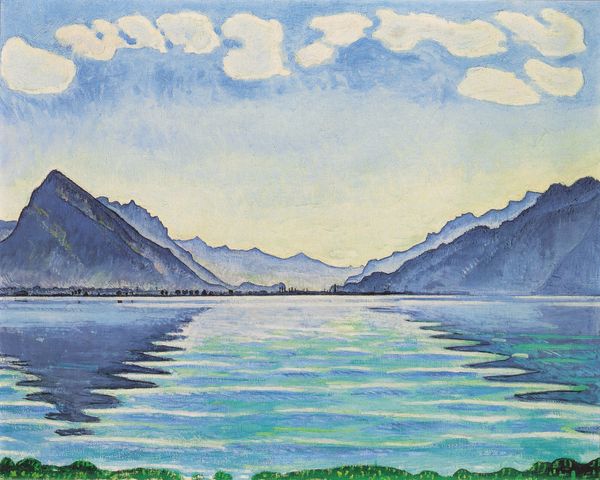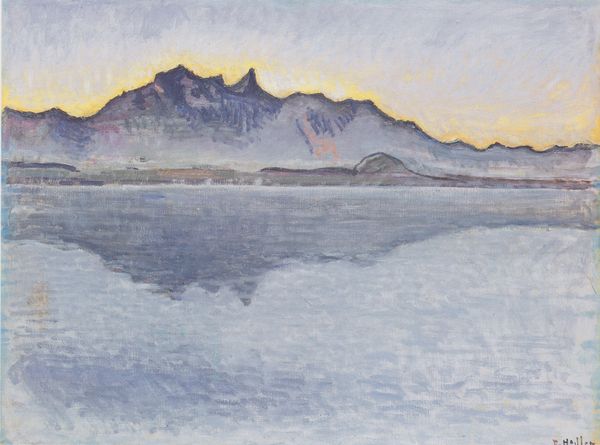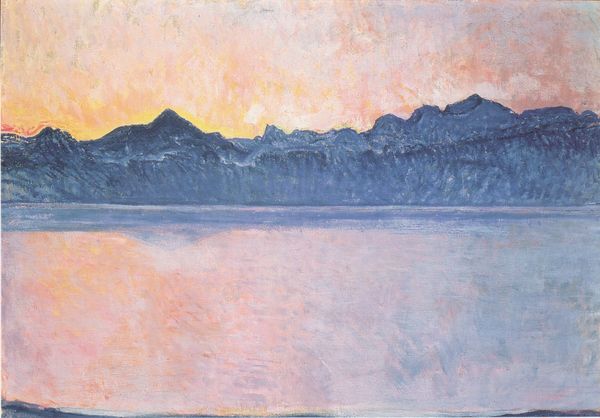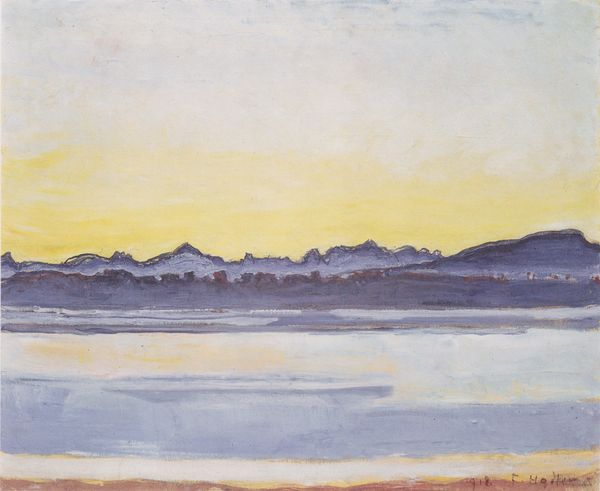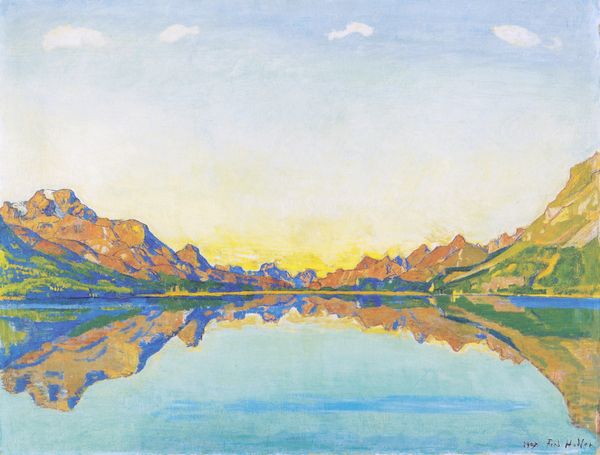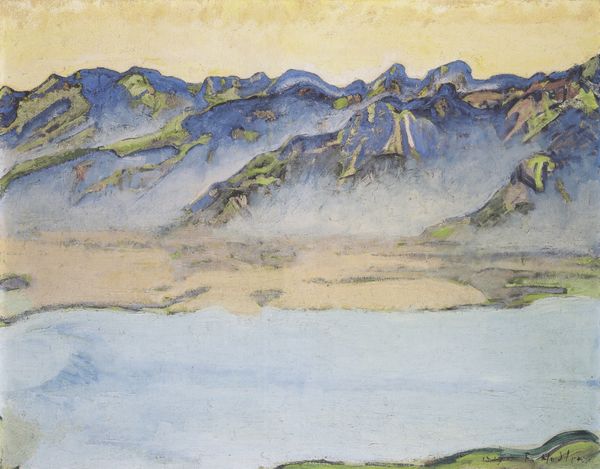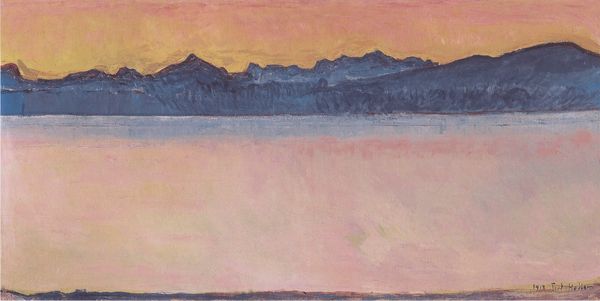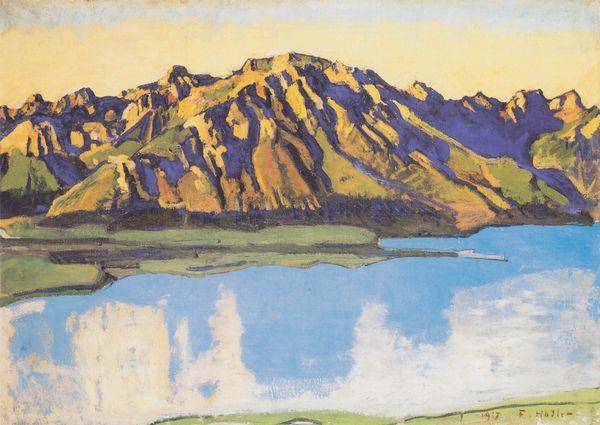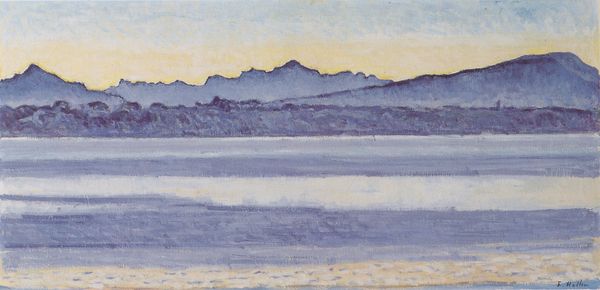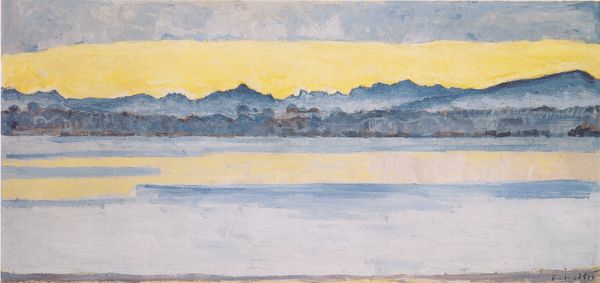
Dimensions: 67.5 x 92 cm
Copyright: Public domain
Curator: Before us hangs Ferdinand Hodler's "Thun with symmetric mirroring," created in 1909 using oil paints. The way he captures the still lake reflecting the mountains is mesmerizing. Editor: It evokes a sense of almost unnerving stillness. That mirror image symmetry definitely creates an otherworldly feeling. There’s a coolness too, a detached observation. Curator: Hodler, influenced by symbolism, frequently explored themes of nature and parallelism. In this painting, we can analyze how the mirrored reflections symbolize harmony and balance, notions often discussed in philosophical discourses of the time. He paints in the wake of political and cultural anxieties around the turn of the century. Editor: I'm drawn to the almost primordial symbolism of water as a reflector of truth and subconscious. Mountains also hold immense symbolic weight; they represent steadfastness, endurance. It feels like the canvas has been divided, and unified at once. Curator: Absolutely, we could examine the interplay between gender and the landscape here as well. Nature had a role to play for women’s place in the turn of the century: did it serve as an invitation for freedom, or containment? What can this visual relationship communicate about the sociopolitical dynamics that determined life experiences? Editor: And there’s that almost icy blue palette, almost monochromatic. Is that a symbol for death, rebirth, some transformation? How can Hodler’s use of that cold blue provide further meaning to this stillness and the mountain ranges looming overhead? Curator: Those questions are important to engage with critically because Hodler was intentionally engaging with modernist styles and questioning his predecessors in artistic expression, as the city of Thun rapidly grew into a more industrial urban centre. His visual decisions, like this restricted palette, served as commentary and also resistance to such progress. Editor: Hodler definitely prompts us to reflect on the enduring power of symbols to connect us to deeper, almost unspoken realms of understanding. Curator: And to consider the complex sociopolitical realities that shaped both his work and our interpretations of it today.
Comments
No comments
Be the first to comment and join the conversation on the ultimate creative platform.
